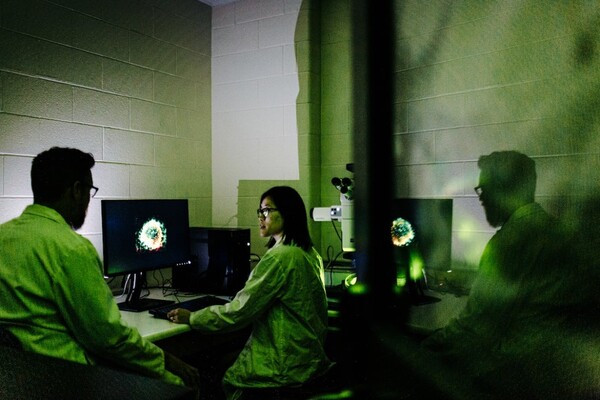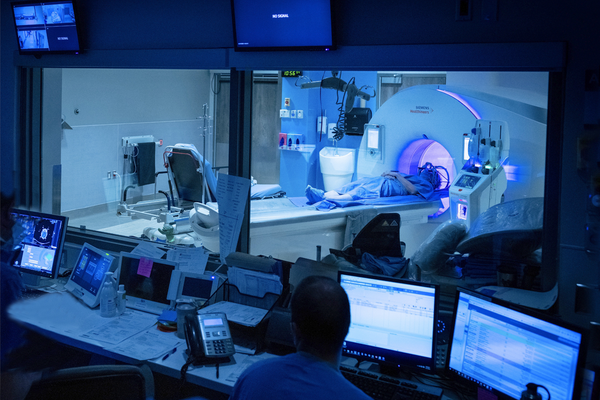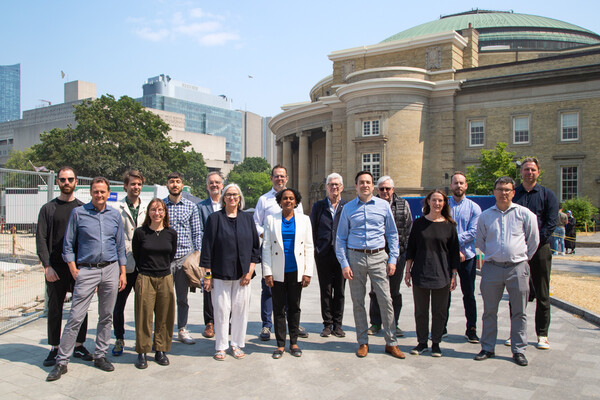Celebrating 75 Years of Scientific and Medical Art
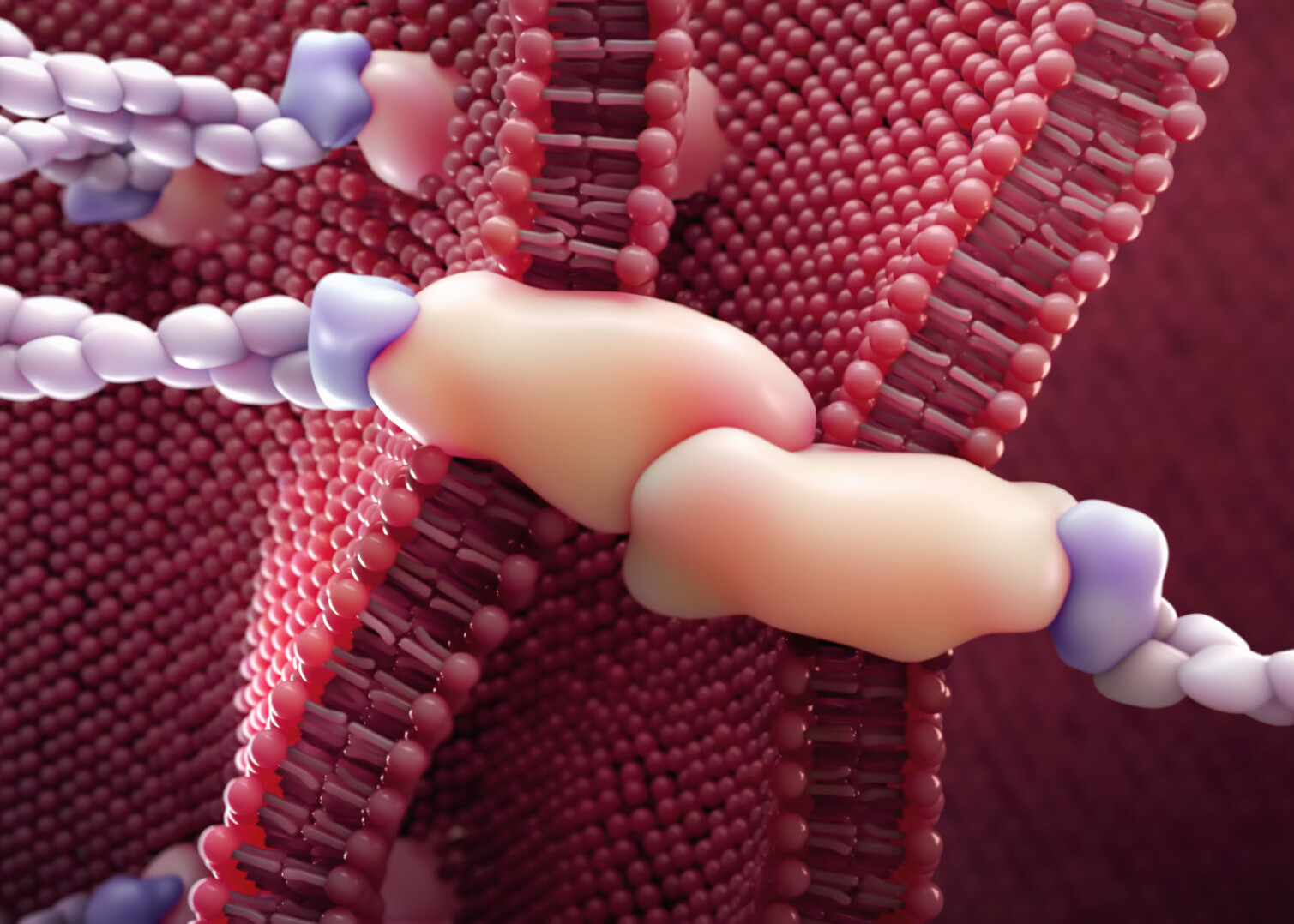
Temerty Medicine’s Master of Science in Biomedical Communications (MScBMC) program marks a milestone this June with disruptors, an exhibition of medical and scientific art spanning the program’s 75 years.
The online retrospective is part of a month-long schedule of BMC 75 events that wrap the program’s anniversary year.
And there is much to celebrate.
The MScBMC program is the sole Canadian program — and one of just four in North America —to offer graduate level training in visual science communications. Founded in 1945 as a certificate program called Art as Applied to Medicine (AAM), it became a bachelor of science degree (BScAAM) in the 1960s before evolving yet again into a two-year graduate studies program (MScBMC) in the 1990s when it was renamed biomedical communications.
Now based at U of T’s Mississauga campus, the program provides highly specialized training to graduate students to create illustrations and visualizations to promote understanding, communication and advancement of science and medicine.
Used to communicate to a wide variety of audiences, inlcuding scientists, medical health professionals and lay audiences, the work is published in journals and textbooks, used in teaching and marketing materials, and even appears in courtrooms to illustrate testimony by expert medical witnesses.
EVOLUTION OF SCIENCE COMMUNICATION
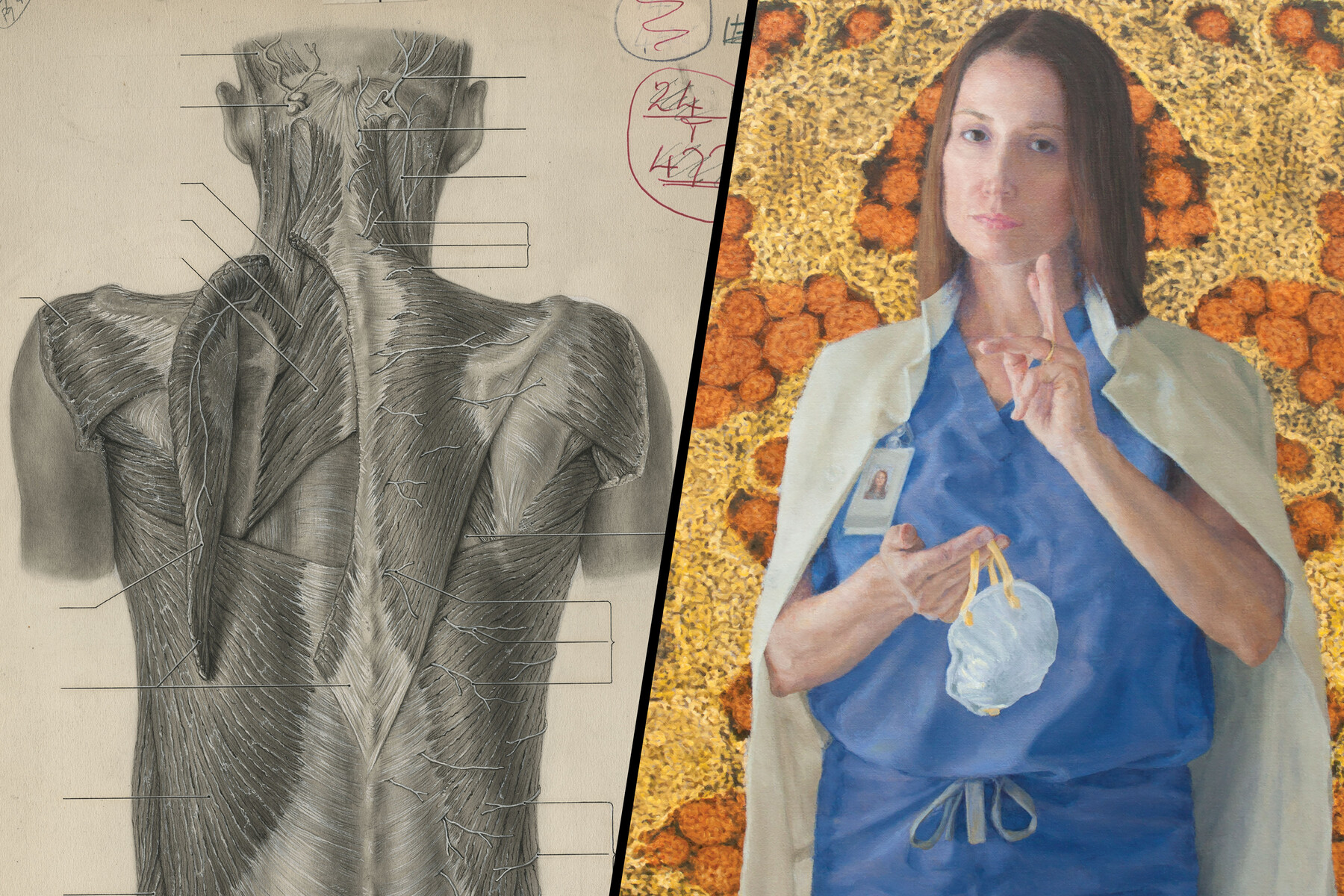
“The focus of our work and the tools at our disposal have evolved tremendously over the past 75 years but the ethos of our practice remains the same,” says program director and alumna Jodie Jenkinson (MScBMC 1998).
“At its core, biomedical communications is a problem-solving activity involving the deconstructing of structures and processes and the identification of visual communication strategies to convey these phenomena with clarity and accuracy.”
Professor emerita Margot Mackay agrees. Mackay (BScAAM 1968) joined the program as a student in 1964 and launched a career creating step-by-step illustrations to help surgeons communicate their work to other practitioners as well as to patients and their families.
Mackay and her contemporaries worked in carbon dust, watercolour or pen and ink for journal publications, while teaching relied on projection media like 35 mm slides and video production.
“In the early days, we didn’t have computers, so you had to fine-tune your drawing skills,” she says.
Now retired, Mackay continues to critique student work. She notes that contemporary illustrators also train to create visualizations with digital animation platforms, tablet technology and augmented reality.
While tools of the trade have evolved, so too has the subject matter. Advancements in medical technology and scientific knowledge ensure there’s always new and different information to communicate.
Mackay recalls perching atop a special step ladder with a bird’s eye view of the operating room to make drawings of some of the earliest lung transplant procedures performed in Toronto.
“The content is now at the cellular or micro level, showing the reactions of proteins and parts of the cells,” Mackay says.
“That’s where the research is. Illustrators have always been part of the front line to assist scientists in communicating that research.”
THE ART AND SCIENCE OF DISRUPTION
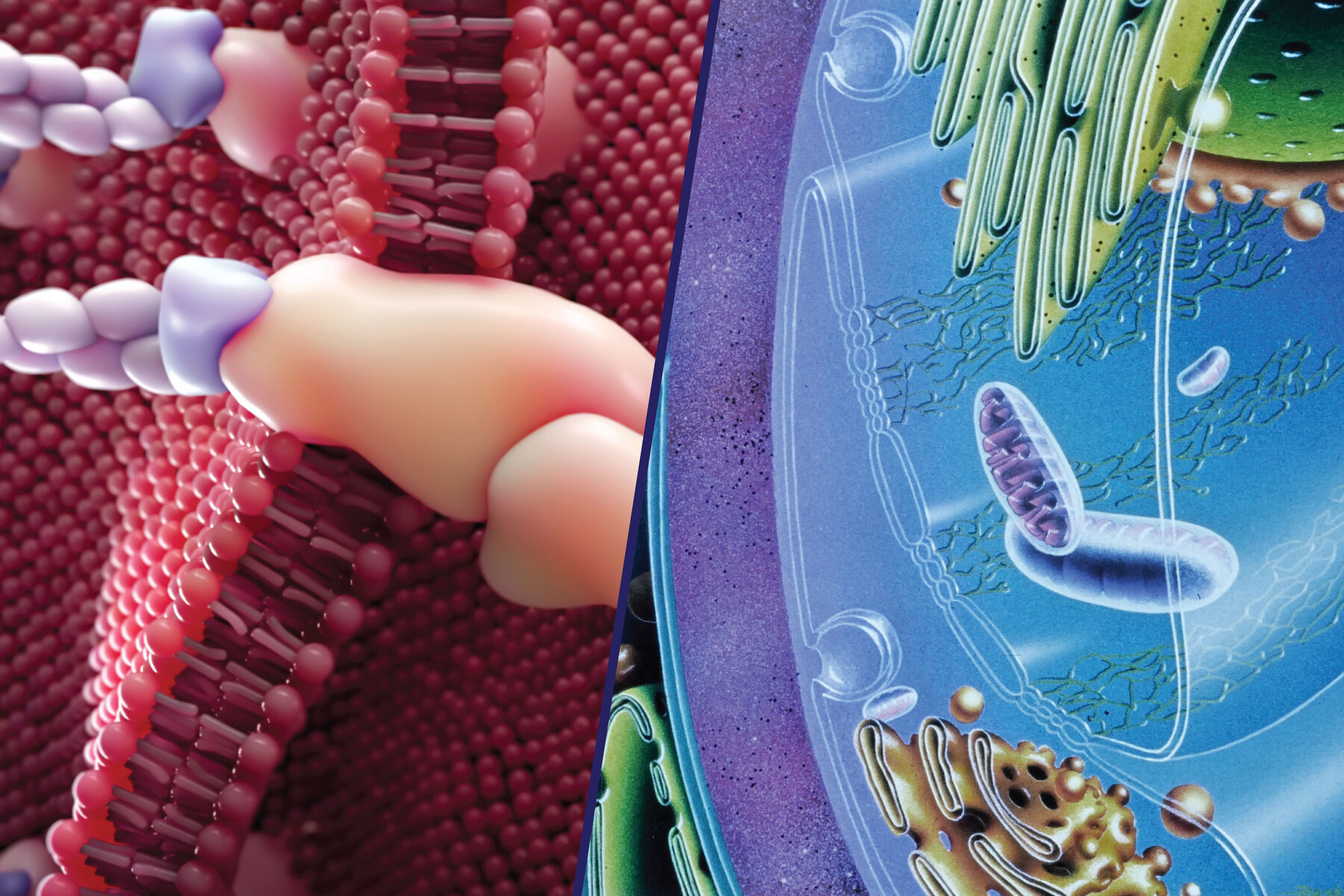
“If the past year has shown us anything, it’s the importance of scientific communication as a vehicle for informing and engaging the public,” says Jenkinson.
“The pandemic derailed initial plans to hold a gala event but gave us time to reflect on the profession and our role in society.”
The anniversary exhibition, titled disruptors, features contemporary and archival work from students, faculty and alumni that explores the impact of disruption on the content of science communication and the techniques used by the communicators.
Curated by first-year MScBMC students Mimi (Yuejun) Guo and Shay Saharan, disruptors is hosted on a digital platform that mimics a physical gallery space. Works are displayed on virtual walls and include clickable pop-ups with information about the artist and their work.
The exhibit is divided into three sections that explore how societal changes, advances in science and medicine and how new visualization tools have influenced the field. A new phase will be released each Monday throughout the month, beginning May 31. The full catalogue will be on display during the week of June 21 to 27.
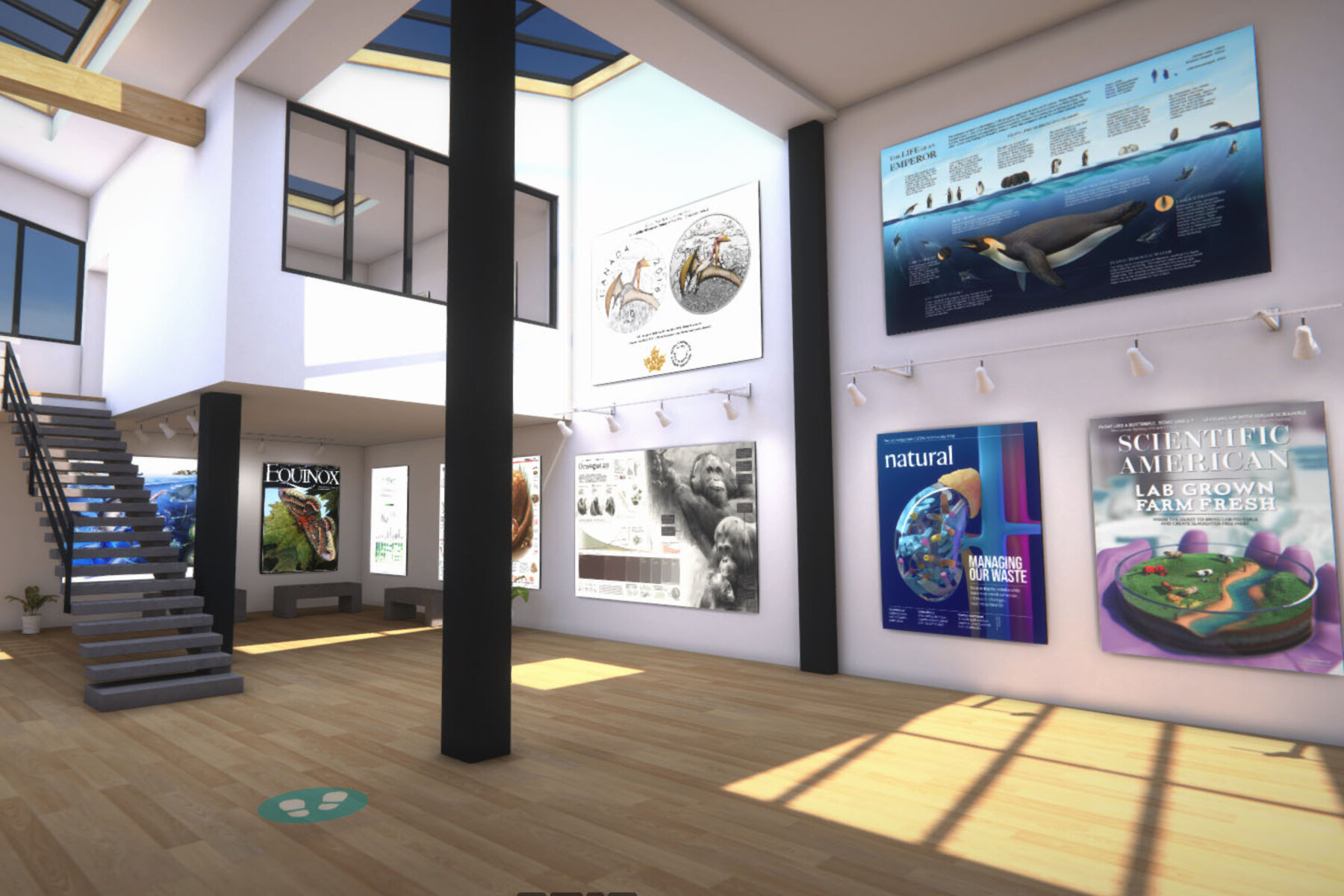
Visitors to the gallery will find archival images such as carbon dust illustrations from the ground-breaking Grant’s Atlas of Anatomy and images by program founder Maria Wishart, who documented the response to the smallpox vaccination in the 1930s. Their work is displayed alongside contemporary digital images and videos created by recent alumni and current students.
Guo says it was exciting to curate the retrospective. “We can learn from each other and admire each other’s work,” she says.
Alumnus Derek Ng (MScBMC 2015, now an assistant professor with the program who teaches molecular visualization and interactive media design, says his favourite piece in the exhibition is an animation of the SARS-CoV-2 virus particle.
The animation was created by another alumnus, Nick Woolridge (BScBMC 1991), who is now an associate professor and past director of the program. It has been used internationally by public health leaders to communicate the science of COVID-19.
“It shows the virus and cuts away to show the internal architecture,” Ng says. “It’s a great visualization of molecular science.”
The exhibit also includes an online scavenger hunt to encourage participats to explore the exhibit, with a chance to win copies of the commemorative catalogue and limited-edition, double-sided jigsaw puzzle.
The catalogue and the puzzle feature the 1943 illustration Dissection of the Facial Nerve by one of the program’s first graduates, Marguerite Drummond (AAM 1946) and Blood-Brain Barrier by alumna and biomedical artist Hang Yu Lin (MScBMC 2020), are also available for purchase.
“It’s cool to see how far the profession has come over 75 years,” says Saharan. “You can see the changes in technique and technology, as well as what we’re capable of doing right now and how that’s changing the skills we need to learn to make science accessible.
disruptors runs online until June 27. Visit the MScBMC News and Events page for more information about the exhibit, alumni workshops and other BMC 75 events.
News
